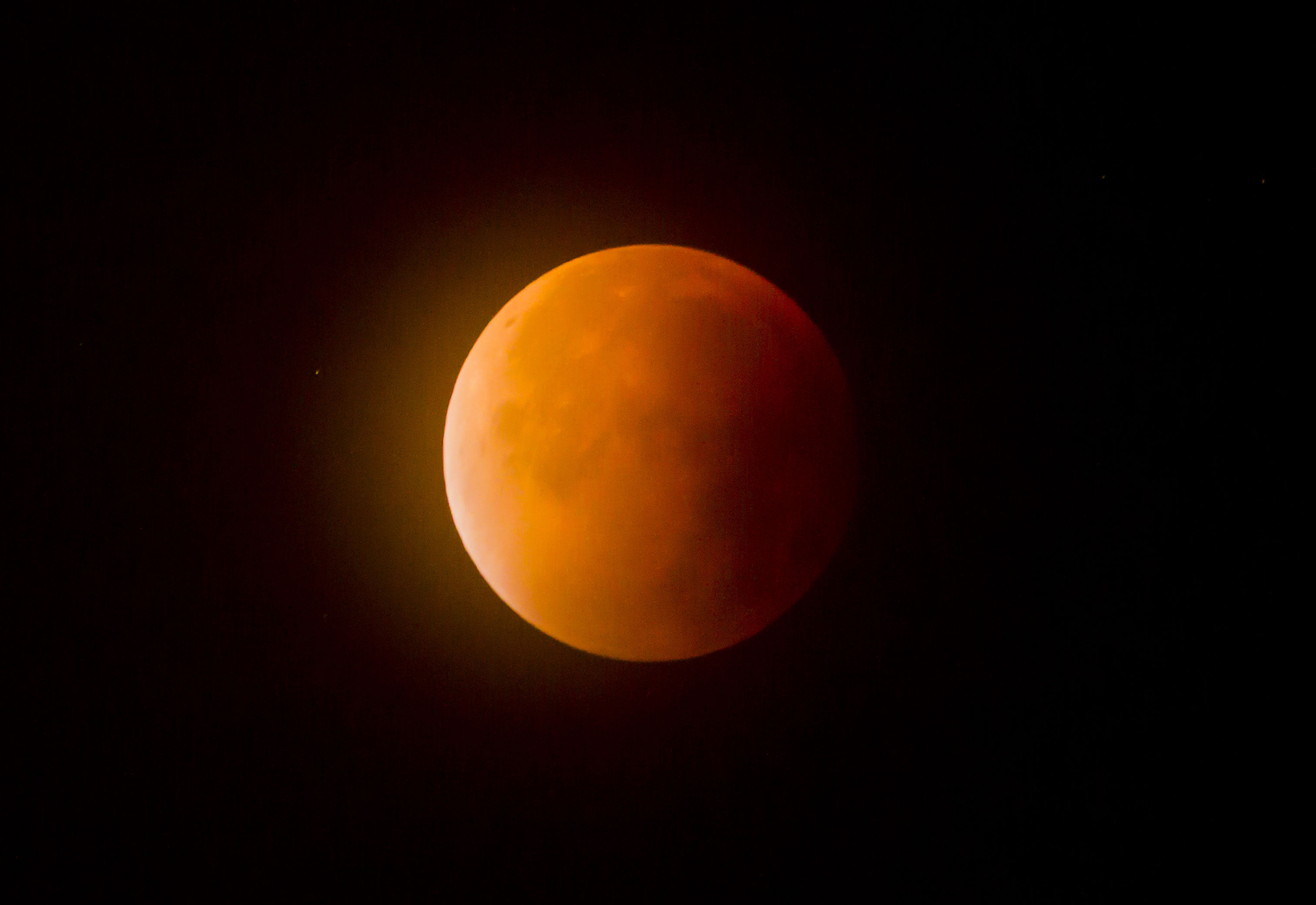
ASTRONOMERS and skygazers will be on the look out for a lunar spectacle on Monday morning as a total lunar eclipse takes place.
Commonly known as a blood moon, the celestial event will see the moon temporarily change to a reddish colour which should be visible to most of the UK – as long as there is not too much cloud.
What is a blood moon?
A blood moon is the unscientific name for a total lunar eclipse, which is when Earth passes in between the sun and the moon, casting a shadow over the moon as sunlight is blocked.
During this process, some sunlight is filtered through the Earth’s atmosphere, reflecting onto the moon to give a red appearance.
Why is it called a blood moon?
The term blood moon harkens back to a time when people were superstitious about the influence of a lunar eclipse, but also when people had no knowledge of what was going on.
“The real reason that the term blood moon exists is because people used to be terrified of eclipses – thousands of years ago, if the moon suddenly went red without warning in the sky, people would look up and be terrified,” explained Tom Kerss, an astronomer from the Royal Observatory Greenwich.
“That would have been seen as a sign or omen of something terrible happening, as the moon looks like it’s stained with blood at that point.
“It does evoke something I suppose in the way that the moon appears, but the real technical term would simply be a total lunar eclipse.”
What is significant about this blood moon?
The most significant thing about this year’s blood moon is that it will be the last of its kind to occur for a couple of years.
“This is actually the last total lunar eclipse visible anywhere on Earth until May 2021, so we’re going into this unusual lull in total lunar eclipses over the next couple of years,” Mr Kerss continued.
“So this is a really good one to catch as it’s going to be a long time before you catch another one like this – we will have other lunar eclipses, we just won’t have anything quite as spectacular until May 2021.”
Will the blood moon be visible from the UK?
Yes, the blood moon will be visible from the UK, weather permitting.
Because this is a setting lunar eclipse, it means that the moon is getting lower during the eclipse, so it will start in the south-west at a reasonably high up angle, but will end up going low in the west by the time the moon is really getting into the deepest part of the eclipse.
“We’re talking about 20 degrees above the horizon,” Mr Kerss said.
“If you live in an urban or suburban area, usually 20 degrees of your local horizon is obscured by buildings or trees, so it’s just worth making sure that you have a good, clear, western view if you want to go out and spot it, or get to a good high window that faces west maybe and look from there.”
What time will the blood moon take place?
The eclipse begins at 2.36am on Monday January 21, though observers are unlikely to see anything until much later in the morning.
The best time is around 5.12am to catch the maximum eclipse, when the moon will be completely submerged within the Earth’s shadow.
“The moon will be red between about 4.40am and about 6.45am, so it’s actually more than an hour that you have to observe this blood moon phenomenon where the moon is totally eclipsed,” Mr Kerss said.
The Royal Museums Greenwich will also host a Facebook Live event from 4am, where viewers can watch as events unfold.
Do I need a telescope to photograph the eclipse?
Observers do not need a telescope to see or photograph the eclipse – Mr Kerss says a standard DSLR camera should be able to capture decent images.
For the sharpest photos, use a tripod or shutter remote, so that camera usage doesn’t vibrate the image as it is being captured.
Use the longest lens to capture more detail of the moon and colour gradient. If you don’t have access to a longer lens, wait for the moon to get lower and closer to the horizon, and frame the eclipse with buildings or scenery instead.
When was the last blood moon?
The last blood moon took place in July 2018, though clouds largely obscured the celestial phenomenon in the UK.

Enjoy the convenience of having The Sunday Post delivered as a digital ePaper straight to your smartphone, tablet or computer.
Subscribe for only £5.49 a month and enjoy all the benefits of the printed paper as a digital replica.
Subscribe